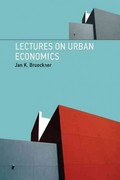Question
1. Which of the following would be a fixed cost for an automobile manufacturer? a. The price of steel used in the frame of cars
1. Which of the following would be a fixed cost for an automobile manufacturer?
a. The price of steel used in the frame of cars produced
b. Employee payroll
c. Paying for electricity to run the production facilities
d. The cost associated with paying back a loan from investors
2. An input would be considered variable if
a. the amount of the input used varies only rarely.
b. the company were easily able to adjust its use if changes in product demand required it.
c. its price to use varies frequently, like gasoline prices.
3. A year ago, a local company decided to expand its scope and purchase a building to open a retail store in a neighboring city. Which of the following would be a sunk cost for that company?
a. Attorneys' fees that were paid to facilitate the sale of the building.
b. The purchase price of the building itself (presuming the building is still in good condition).
c. The current salaries that are paid to current employees now.
d. The prices of products that are to be sold next year.
4. When a company had two employees, it's total output was 100 units. When it had three employees, it's total output was 160 units. The average product associated with two employees was ______ units.
a. 50
b. 100
c. 80
d. 33.3
5. When a company had two employees, it's total output was 100 units. When it had three employees, it's total output was 160 units. The marginal product associated with the third employee was ______ units.
a. 60
b. 100
c. 53.3
d. 160
6. Why does marginal product eventually diminish in the short run?
a. The short run is too short an amount of time to produce very much output.
b. The fixed input is increasing much faster relative to the variable input, so productivity cannot keep up.
c. Increasing amounts of variable input will run up against the constraint of the fixed input and will be less productive.
7. When TP is rising,
a. MP is positive but falling.
b. MP is positive, but may be rising or falling.
c. MP is positive and rising.
d. MP is rising but negative.
8. When TP is maximized,
a. MP is maximized also.
b. MP is zero.
c. MP is at its lowest point.
d. MP is increasing at its fastest rate.
9. When MPMP is negative,
a. TP is falling.
b. TP is rising.
c. TP is negative.
10. When Q=50, TFC=$2,000 and TVC=$8,000. When Q=60, TVC=$9,000. Which of the following is true?
a. If TVC increased by $1,000, then TFC must have increased by $1,000 also, so when Q=60, TC=$12,000.
b. If TVC increased by $1,000, then TFC must have decreased by $1,000 to keep TC constant.
c. When Q=50, TC=$10,000 and when Q=60, TC=$11,000.
d. It is impossible to know TC when Q=60 because we are not given TFC when Q=60.
11. When Q=50, TFC=$2,000 and TVC=$8,000. When Q=60, TVC=$9,000. Which of the following is true?
a. When Q=50, ATC=$200 and when Q=60, ATC=$166.67.
b. When Q=50, AVC=$160 and when Q=60, AVC=$150.
c. When Q=50 or 60, AFC is constant at $40.
12. The TVC curve went through the origin; why is TC not equal to zero when the company does not produce any output?
a. The company will still need staff even if it is producing zero output.
b. The existence of fixed costs means there is some nonzero total costs to bear at any output, even Q=0.
c. TC excludes TVC, so even if TVC=0 it is irrelevant to the value of TC.
13. Why is ATC greater than AVC?
a. ATC and AVC are inversely related, so when AVC falls ATC rises.
b. Even though AVC reflects the law of diminishing marginal product, ATC does not.
c. Because it can bench press, like, twice as much as AVC, dude.
d. ATC reflects fixed costs too, which are excluded from AVC.
14. When MP rises, MC falls because
a. workers are into the "crowding" phase of production, and so costs fall due to their inefficiency.
b. the "teamwork" phase of production results in rising costs and productivity.
c. the law of diminishing marginal product suggests that MC will eventually always fall.
d. efficiency in production gets reflected in efficiency of costs.
Step by Step Solution
There are 3 Steps involved in it
Step: 1

Get Instant Access to Expert-Tailored Solutions
See step-by-step solutions with expert insights and AI powered tools for academic success
Step: 2

Step: 3

Ace Your Homework with AI
Get the answers you need in no time with our AI-driven, step-by-step assistance
Get Started


